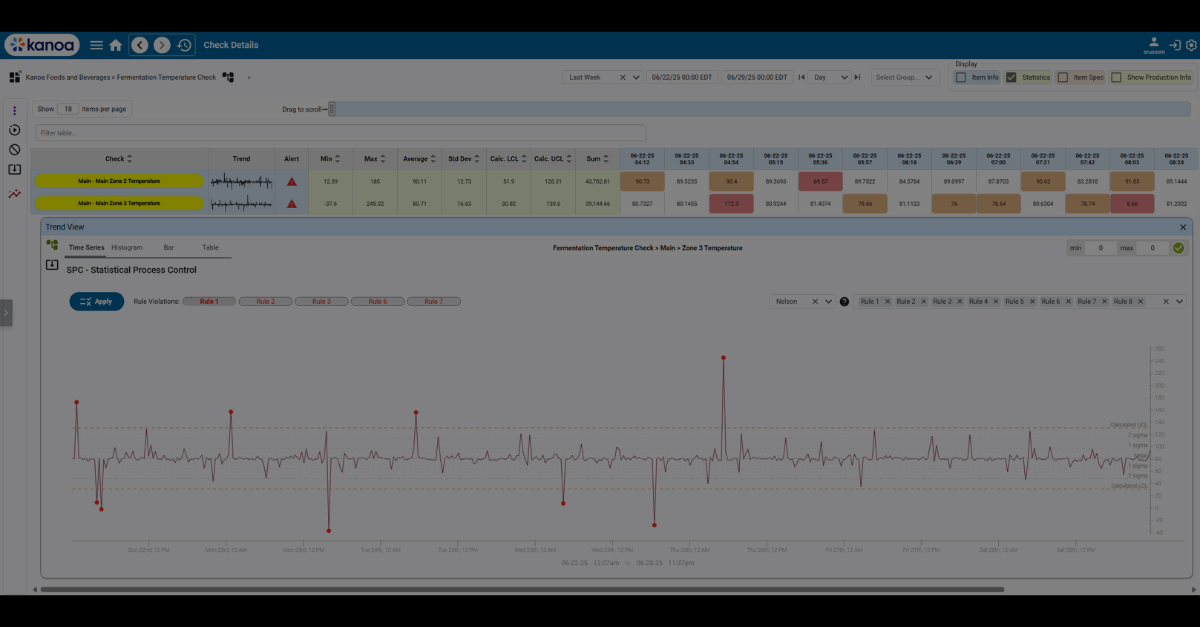Material Management in Kanoa MES
Effective material management is the cornerstone of a well-functioning manufacturing operation. At Kanoa, we've developed a robust material management system within Kanoa MES that allows manufacturers to streamline the way they handle materials. This blog explores how materials are managed in Kanoa MES, providing insights into configuring materials, integrating with ERP systems, and optimizing production processes.
The Role of Material Management in Kanoa MES
Material management in Kanoa MES involves creating, configuring, and associating materials with production assets. This process ensures that materials are accurately tracked and managed throughout the production lifecycle, enabling manufacturers to maintain control over their operations and achieve higher efficiency.
Configuring Materials in Kanoa MES

Creating and Organizing Materials
It's easy to create, edit, assign, and organize materials in Kanoa MES:
- Material List: Begin by creating a list of materials. Each material is also given an Item Class, which functions like a folder structure for organization. Item Classes categorize materials, making it easier to manage and locate them within the system. This categorization is particularly important with Kanoa Quality, as it allows you to set specifications for an entire item class rather than each individual item.
- Description: Provide a description for each material to ensure clarity and ease of identification.
- Custom Attributes: Kanoa MES offers the flexibility to add custom attributes to materials. These can be crucial for tracking additional properties specific to your operations. These custom attributes can be stored and retrieved within Kanoa MES for specialized reporting and analysis.
This basic configuration sets the foundation, but to fully leverage materials in production, you'll want to associate those materials with the manufacturing assets that use and produce them.
Associating Materials with Assets

To ensure materials are correctly utilized in production, they need to be linked to specific assets. You can specify:
- Input and Output Materials: Materials must be assigned as input or output (or both!) for each asset. Input materials are used for lot tracking and general material management, while output materials define what an asset can produce and the rates at which it is produced.
- Production Rate Parameters: For each output material, set standard and scheduled rates. The standard rate is the maximum capacity for running the material, while the scheduled rate is the typical operational rate.
- Unit Associations: Each material is given an infeed unit, outfeed unit, waste unit, and package count. These associations help convert infeed units to outfeed units, with the default conversion being 1:1. For example, if you're packaging a dozen eggs into a carton, the infeed units (12 eggs) equal the package count (12) multiplied by the outfeed units (1 carton). This detailed specification ensures accurate material tracking throughout the production process.
By linking materials to assets and defining these parameters, manufacturers can ensure accurate production tracking and reporting.
Integration with ERP Systems
Materials in Kanoa MES are designed to work with or without an ERP system:
- Independent Operation: Users can enter all material information directly into Kanoa Ops, enabling standalone operation without ERP connectivity.
- ERP Integration: Kanoa Ops can integrate with your ERP system, allowing for the automatic import of material lists, their expected rates, and associated assets. Typically, a plant runs many different materials, and these materials, along with their expected rates and associated assets, may change frequently. This data is usually stored in an ERP system and synchronized with Kanoa MES, ensuring the ERP holds all of the master data and provides it to the Kanoa MES as needed. This integration ensures that material data is always up-to-date and consistent across systems, streamlining operations and reducing the risk of errors.
Using Materials in Kanoa MES

Materials are used throughout Kanoa MES to set up operations runs and quality tests, and for production reporting.
- Unscheduled Production Runs: Easily initiate production runs for a material configured for a given asset without having to add it to the Schedule or in a Work Order. This is useful when rush-orders come in so that manufacturing can start producing as quickly as possible without having to wait for paperwork or other logistics.
- Work Orders: Create and manage work orders, assigning specific materials to production lines and tracking their progress.
- Production Reporting: Generate reports based on the configured material parameters, providing valuable insights into production performance.
- Quality Forms: Associate a Material with a Check Sheet in Kanoa Quality to track a quality check against a specific material and to set quality parameters based on the material being tested.
Conclusion
Effective material management is essential for optimizing production processes and ensuring operational efficiency. Kanoa MES provides a powerful, flexible system for managing materials, whether operating independently or integrated with an ERP system. By configuring materials, associating them with assets, and defining production parameters, manufacturers can achieve precise control over their production processes.
You May Also Like
These Related Stories
%20(9).png)
Precision Lot Traceability from Raw Material to Finished Product with Kanoa Trace

Mastering Quality with SPC: A Guide for Modern Manufacturers


No Comments Yet
Let us know what you think